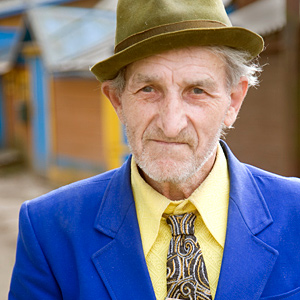
Squirrel-Powered Mobile Sculpture designer, dead at 81.
Hamish Gripplethorpe, the English sculptor who delighted countless children (if not art critics) with his complex contraptions driven by squirrels, died in London on July 28th after collapsing in Hyde Park where he had been jogging around the reflecting pond.
As an 18-year old pilot in World War II, Gripplethorpe trained with his American counterparts, among them the sculptor Richard Serra, who became a lifelong friend. Serra wrote an introduction to an exhibition catalogue featuring Gripplethorpe’s sculptures, noting the artist’s squirrel-driven works “explored the relationship between steel and muscle in the post-industrial world.”
Gripplethorpe studied art in Italy in the 30’s and returned to Bologna in the postwar years where he developed his metalworking techniques. For almost a decade Gripplethorpe focused on fantastical sculptures inspired by suits of armor. Some elements in these early pieces suggested the armor was designed for strangely deformed humans or perhaps another species altogether. The work failed to inspire critics and was largely ignored by the art world.
The artist returned to London in the mid-50s where an encounter in his backyard inspired his first squirrel-driven piece, It’s a Nutty World, which consisted of a series of interlocking wheels, the largest of which was more than ten feet in diameter, all made of ultra-light material. In the center, in the smallest wheel of all, a squirrel in its treadmill wheel drove the movement of the entire device. Critics likened the piece to a medieval model of the cosmos. In 1957 a show of 47 Gripplethorpe squirrel works at a London gallery was such a success that it was extended for nearly two years, the longest gallery run for a single artist in London history.
Critics, however, were not amused after a disastrous opening in Bruges, Belgium, at which animal rights activists set 40 of Gripplethorpe’s squirrels free among the crowd at the reception, the artist retired from the public scene. Although he continued to create small-scale squirrel-driven devices for a few private collectors, Gripplethorpe largely dedicated the last decades of his life to his hobby, taxidermy.
At a private memorial for friends and family, 80 squirrels were set free in the Scottish Highlands where the artist had traveled often in the past and where he trapped his “little art assistants,” as he called them. “Hamish will be sorely missed,” Serra told the crowd, “but probably not by squirrels.”
